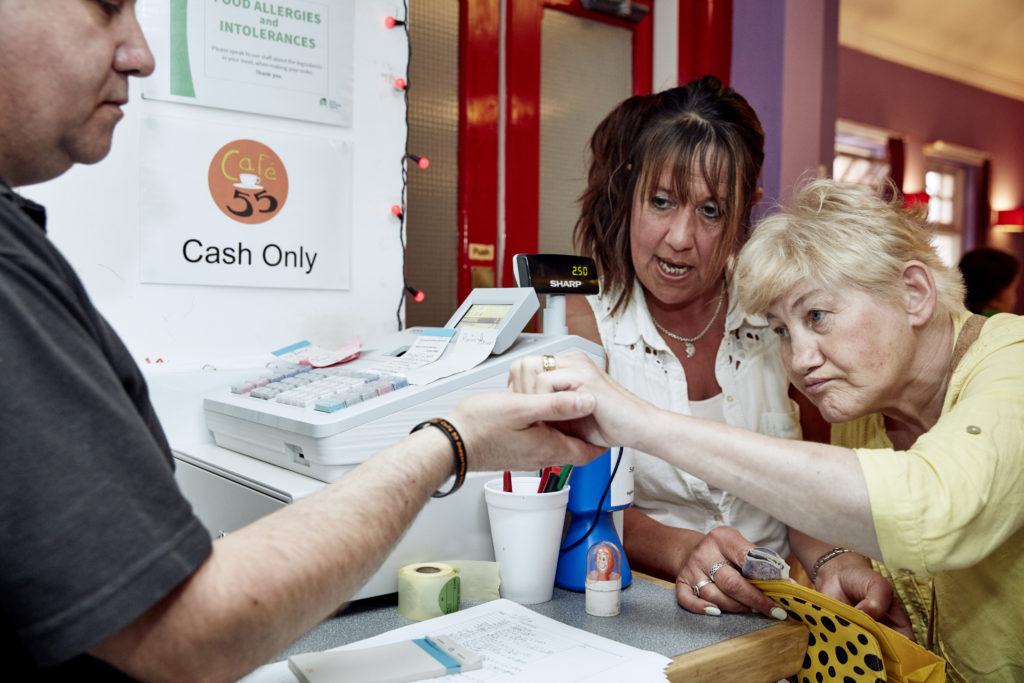We’re working with the ONS to raise awareness of barriers disabled people face
Last month the Office for National Statistics released some new research looking at the barriers disabled people face in accessing goods and services. This means things like going to the hairdresser’s or the bank, as well as shopping online or in person – activities that lots of us need to do on a regular basis.

Sense was involved in the steering group for this research. We know that these barriers affect people with complex disabilities, so we’re helping to raise the profile of the research’s findings and recommendations.
What are the barriers that people are facing?
The research found many different barriers, including:
- Restrictive building layouts.
- Inaccessible online services.
- Poor information provision.
- Inflexible design of customer services.
Services often aren’t designed with the needs of disabled consumers in mind. For example, a shop layout might not be suitable for someone who uses a mobility aid.
“I’ve found the aisles are never wide enough for manual or electric [wheelchairs], even crutches. It’s almost impossible to navigate a clothing shop without taking out a rail of clothing. I’ve lost count of the amount of times I’ve nearly pulled an entire rail over.”
ONS disabled research participant
The research participants shared examples of how buying goods and services online also has its own problems.
“I find it very confusing and devastating sometimes because let’s say the formatting is terrible, it’s not optimised for mobiles, there’s no option for screen readers, things aren’t properly explained or everything is hidden in really weird awkward places. Like the user interface and user experience is not optimised at all. Things like that make it very hard for me as a consumer to actually purchase things.”
ONS disabled research participant
Why is this a problem?
Disabled people should have the same ability to access goods and services as non-disabled people. It’s clear how frustrating and unfair it can feel when this doesn’t happen.
Companies must make sure they don’t discriminate against disabled customers according to the Equality Act. Their legal obligations also extend to making reasonable adjustments for disabled people to use their service. Any business that isn’t providing a suitable service for disabled people could be breaking the law.
Making businesses open to disabled consumers also makes financial sense too. The “purple pound” is a term used to describe the spending power of disabled people and their families. It’s currently estimated to be £250 billion a year.
“Companies need to remember that disabled people have a lot of extra time we could be spending using your services, or in your shops. The money we have, companies are missing out on it… they are not remembering us. Not making us feel welcome.”
ONS disabled research participant
What needs to change?
When it came to thinking about the future, research participants said that flexibility was key – given the wide range of needs that disabled people can have, physical and online environments need to be flexible and adaptable. Any support for helping people to access services needs to be meaningful and readily available.
“I could say ‘can you help me with this I’m disabled’, but I’d rather not. I want to be treated the same. I would like society to be more aware that some people might need help, and don’t put the onus on disabled person to ask for assistance. It should be on the person supplying the goods to offer, and then people can say yes or no.”
ONS disabled research participant
Another recommendation from this research is that disabled people should be involved in policy and service decisions that impact their lives. Including disabled people in the planning or development process is a highly effective way of ensuring that any assistance they need is considered from the start.
Training for staff can also go a long way in making a more inclusive environment for disabled people by increasing empathy and understanding. Disability awareness training can give staff more confidence to make the adaptations disabled customers might need.
If you’re interested in increasing inclusivity in your business or local area, take a look at our five top tips to make your community more inclusive.
Also, check out the Association of Convenience Stores Everyone’s Welcome Guide.

